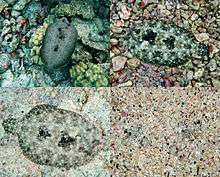World War II US Navy dazzle camouflage measures 31, 32 and 33: cruisers
Dazzle camouflage of warships was adopted by the U.S. Navy during World War II, following research at the Naval Research Laboratory. Dazzle consists in painting obtrusive patterns on vertical surfaces. Unlike some other forms of camouflage, dazzle works not by offering concealment but by making it difficult to estimate a target's range, speed and heading. Each ship's dazzle pattern was unique to make it more difficult for the enemy to recognize different classes of ships. The result was that a profusion of dazzle schemes were tried, and the evidence for their success was at best mixed.
Dazzle camouflage patterns used on cruisers are presented here. Patterns designed for cruisers were suffixed with the letter C, but many cruisers were painted in adapted patterns originally designed for other ship types (A for aircraft carriers, D for destroyers etc.)
Colors
| MS-31 | MS-31a | MS-32 | MS-33 | MS-33a | Horizontals | |||||||||
| Haze Gray 5-H | Haze Gray 5-H | Light Gray 5-L | Light Gray 5-L | Pale Gray 5-P | Pale Gray 5-P | Light Gray 5-L | Ocean Gray 5-O | |||||||
| Ocean Gray 5-O | Ocean Gray 5-O | Dull Black 82 | Ocean Gray 5-O | Haze Gray 5-H | Haze Gray 5-H | Ocean Gray 5-O | Deck Blue 20-B | |||||||
| Dull Black 82 | Navy Blue 5-N | Dull Black 82 | Navy Blue 5-N | Ocean Gray 5-O | ||||||||||
Some patterns were designed to be used for either Measure 31, 32 or 33 depending on the colors used; these pattern sheets were marked, e.g., MS-3_/3D; in the following table the effective Measure is listed in parentheses after each ship in the last column. In addition, many ships were painted using colors for a different Measure than that marked on the sheet; these are indicated in footnotes.
Patterns
| Name | Description | Pattern sheet | Photo | Known examples |
|---|---|---|---|---|
| MS-32/1C[lower-alpha 1] | for Atlanta-class antiaircraft cruisers | 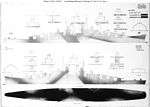 | not used | |
| MS-32/2C | for St. Louis-class light cruisers |  | .jpg) | Honolulu,[lower-alpha 2] St. Louis |
| MS-32/3C[lower-alpha 3] | for Omaha-class light cruisers |  | not used | |
| MS-32/7C | for Alaska-class large cruisers |  | %2C_Oct_1944.jpg) | Guam |
| MS-33/8C | for Brooklyn-class light cruisers |  | not used | |
| MS-31a/9C | for Baltimore-class heavy cruisers | 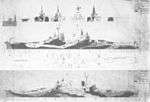 | not used | |
| MS-31a/10C | for Cleveland-class light cruisers |  | Amsterdam | |
| Adapted designs | ||||
| MS-32/11A (aircraft carrier) | adapted to Cleveland-class light cruisers | 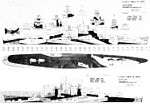 | .jpg) | Montpelier, Duluth |
| MS-32/1D (destroyer) | adapted to Raleigh-class[lower-alpha 4] light cruisers | _class_cruisers.jpg) | _-h.jpg) | Raleigh |
| adapted to Cleveland-class light cruisers |  | -Tarn.jpg) | Columbia,[lower-alpha 5] Topeka,[lower-alpha 6] Houston, Miami | |
| adapted to Alaska-class large cruisers |  | .gif) | Alaska | |
| MS-3_/3D (destroyer) | adapted to Omaha-class light cruisers |  | %2C_June_1944.jpg) | Detroit (MS-32), Richmond (MS-32) |
| MS-33/3D (destroyer) | adapted to Cleveland-class light cruisers |  | .jpg) | Columbia,[lower-alpha 5] Denver, Vincennes[lower-alpha 7] |
| MS-32/5D (destroyer) | adapted to Brooklyn-class light cruisers |  | Phoenix | |
| MS-33/6D (destroyer) | adapted to Northampton-class heavy cruisers | %2C_Dec_1943.jpg) | Louisville | |
| adapted to Cleveland-class light cruisers | 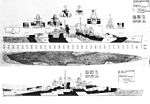 | -.jpg) | Birmingham, Vicksburg, possibly Biloxi | |
| MS-32/7D (destroyer) | adapted to Portland-class heavy cruisers | 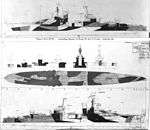 | _underway_in_1944_(stbd).jpg) | Portland, Indianapolis |
| MS-32/9D (destroyer) | adapted to Northampton-class[lower-alpha 8] heavy cruisers |  | .jpg) | Chester |
| MS-33/10D (destroyer) | adapted to Pensacola-class heavy cruisers | _in_MS-33_10D_camouflage.jpg) | Pensacola[lower-alpha 9] | |
| MS-33/13D (destroyer) | adapted to New Orleans-class heavy cruisers |  | | Tuscaloosa, San Francisco |
| MS-32/14D (destroyer) | adapted to Pensacola-class heavy cruisers | 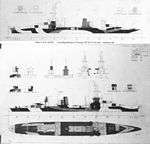 | _Jun_44.jpg) | Pensacola,[lower-alpha 9] Salt Lake City[lower-alpha 6] |
| adapted to heavy cruiser USS Wichita (CA-45) |  | not used | ||
| MS-3_/16D (destroyer) | adapted to Baltimore-class heavy cruisers |  | %2C_Oct_44.jpg) | Baltimore (MS-32) |
| MS-3_/18D (destroyer) | adapted to Baltimore-class heavy cruisers | 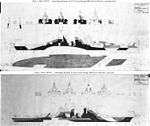 | -Tarn.jpg) | Canberra (MS-32), Quincy (MS-32), Pittsburgh (MS-33) |
| MS-33/21D (destroyer) | adapted to light cruiser USS Nashville (CL-43) | 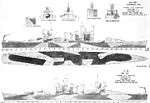 | _in_MS-32_21D_camouflage.jpg) | Nashville |
| MS-33/22D (destroyer) | adapted to Atlanta-class antiaircraft cruisers |  | .jpg) | San Juan,[lower-alpha 7] Flint[lower-alpha 7] |
| MS-33/24D (destroyer) | adapted to Atlanta-class antiaircraft cruisers |  | .jpg) | San Diego,[lower-alpha 7] Reno |
| adapted to Cleveland-class light cruisers | 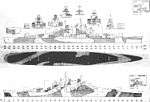 | %2C_Aug_44.jpg) | Pasadena,[lower-alpha 7] Springfield, Topeka, Astoria, Wilkes-Barre,[lower-alpha 7] Atlanta | |
| MS-33/2F (stores ship) | adapted to Omaha-class light cruisers | 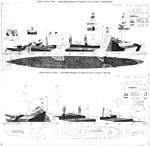 | %2C_June_1944.jpg) | Concord, Trenton[lower-alpha 7] |
- ↑ The colors specified, Ocean Gray and Pale Gray, would normally be a Measure 33 scheme
- ↑ Honolulu of the very similar Brooklyn class used a variant of the St. Louis MS-32/2C design
- ↑ The colors specified, Navy Blue, Haze Gray and Pale Gray, would normally be a Measure 33 scheme
- ↑ i.e. the Omaha class
- 1 2 Columbia received MS-33/3D in Measure 32 colors in early 1944 probably during her January drydocking at Espiritu Santo; she was repainted in MS-33/1D not later than the Philippines operation, most likely during her refit at Mare Island that summer.
- 1 2 Used Measure 33 colors
- 1 2 3 4 5 6 7 Used Measure 32 colors
- ↑ the pattern sheet is marked "CA-27 class;" CA-26 Northampton had been sunk in November 1942
- 1 2 Pensacola wore MS-33/10D from October 1943 until May 1944, when she was repainted in MS-32/14D
See also
- World War II ship camouflage measures of the United States Navy
- World War II US Navy dazzle camouflage measures 31, 32 and 33: aircraft carriers
- World War II US Navy dazzle camouflage measures 31, 32 and 33: battleships
- World War II US Navy dazzle camouflage measures 31, 32 and 33: destroyers
